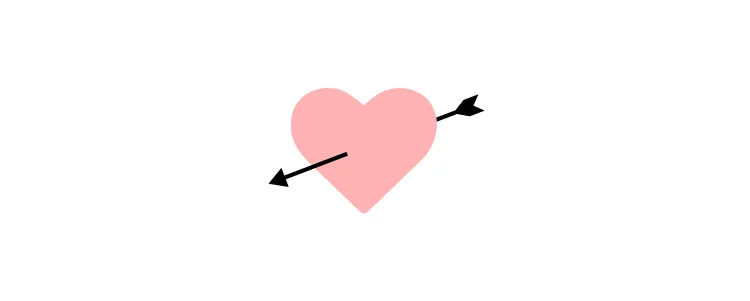UX Honeycomb – 7-Factor Design Framework for Great User Experience

Peter Morville’s User Experience Honeycomb has been around since 2004 and is still a highly relevant design framework for modern product development projects. The framework forces design teams to evaluate a product through seven facets of user experience to identify areas for improvement.
This article provides an overview of the UX Honeycomb and the circumstances where it’s most effective. We highly recommend checking out our design frameworks article for more UX models that solve problems and improve project delivery.
Revolutionize your workflows with the world’s most advanced UX design and prototyping tool. Sign up for a free trial to discover all of UXPin’s code-based design features.
What is the User Experience Honeycomb?
The UX Honeycomb is a design framework developed by Peter Morville in 2004. The framework uses seven facets of UX to guide design teams in delivering a good customer experience. The UX Honeycomb is also a fantastic educational tool for educating junior designers about user-centered design and how to design products customers will love.
Who is Peter Morville, the author of UX Honeycomb?
Peter Morville is an information architect and user experience designer from Scottsville, Virginia, USA. His bestselling books include Information Architecture for the World Wide Web, Intertwingled, Search Patterns, and Ambient Findability.
Peter has spoken on information architecture and user experience at conferences and workshops worldwide and consulted for many Fortune500 companies through his company Semantic Studios.
Peter Morville has won several awards, including from the University of Michigan, AIIP, Society for Technical Communication, and the National Cancer Institute, to name a few.
You can follow Peter’s blog Intertwingled where he shares his valuable knowledge and insights.
7 Facets of UX Honeycomb
Peter’s UX Honeycomb identifies seven facets of user experience designers must fulfill to deliver a product that successfully meets user needs. Let’s explore those seven facets in greater detail.
Useful
The useful component asks, “Is this product or feature valuable to users?” “Is there a want or need?” “Does your product solve a problem for users?”

If a product or feature isn’t useful, it has no purpose, and there’s no reason to build it in the first place. Whether something is useful comes from thorough user research and understanding end-users.
Usable
Usability is a significant part of user experience design. A product might be useful, but if it frustrates users, then it isn’t usable.
Designers must create intuitive user interfaces and information architecture to minimize any learning curve while making it easy to complete tasks or use features.
Prototyping and testing are crucial in identifying pain points and improving the user experience. Designers must also conduct UX audits to ensure new releases meet a project’s requirements while fulfilling user needs.
Desirable
Aesthetics and desirability make digital products enjoyable to use. Designers must consider layouts, visual design, interaction design, and other UI design elements that engage and excite users.
During usability testing and interviews, designers must carefully consider users’ feelings and emotions to determine a product’s desirability. The goal is to delight users with products and features that solve problems effortlessly.
Findable
Findable is about making content and features easy to find. Information architecture, search, and navigation are vital for making a product “findable.” Designers must prioritize navigation according to user needs and business goals.
For example, when designing a mobile app, designers must decide which menu items live on the tab bar vs. behind a navigational drawer.
Findable also includes alerts and error messages. Designers must guide users to solve problems as quickly as possible–like helpful, actionable error messages for form fields.
Accessible
Designing accessible products is essential for modern product development. Designers and engineers must ensure everyone can navigate a site effectively and digest its content, regardless of physical or mental ability.

Accessibility extends beyond these physical and mental limitations to situational and environmental constraints. For example, a voice user interface (VUI) helps blind users use an application, but it’s also essential for someone driving a vehicle.
Designers must consider who will use their products and what situational and environmental challenges they might encounter. It’s also imperative to think about people with disabilities and how to design comparable experiences for assistive technologies.
Credible
Trust and credibility are essential for acquiring and retaining customers. Users expect a consistent product they can rely on to live up to expectations and doesn’t deceive.
For example, how easy is it for someone to downgrade or cancel a paid service? Making these tasks easy creates trust, increasing the likelihood of someone returning as a paying customer. A difficult experience frustrates people, damaging the product and brand’s credibility.
Designers must also ensure CTAs and instructions do what they say. Using ambiguous language or tricking users into completing a task is a quick strategy for losing customers!
Valuable
Users must want or need to use your product. A valuable product solves problems and delivers a return on investment. The return doesn’t have to be monetary; it could be time-saving, help achieve something the user can’t do otherwise, a mindless distraction while waiting in a queue, or even bring joy.

For example, food delivery apps became extremely valuable to people in many countries during lockdowns. These products kept many restaurants open while providing customers with meals.
Understanding users and delivering services that satisfy their wants and needs makes a product valuable.
How to Use the UX Honeycomb
The UX Honeycomb is an excellent framework for evaluation. It’s most effective for existing products rather than designing from scratch. Here are some scenarios where design teams might use the UX Honeycomb framework:
- Erasing design debt: Some design debt is easy to fix, but other usability issues require a systematic approach to identify the core issue(s). The UX Honeycomb lets designers look at problems from multiple angles to pinpoint the root cause.
- UX checklist: The UX Honeycomb provides designers with a foundational user experience checklist during UX audits and other design evaluations.
- Educational tool: Designers can use the UX Honeycomb as a framework for educating junior designers, clients, stakeholders, and cross-functional teams about user experience and how usability issues impact users.
- Redesigns: Designers can use the UX Honeycomb to identify user experience flaws in an existing product before a redesign.
What is an Example of Using UX Honeycomb?
Let’s see how user experience designers can use UX Honeycomb to build a banking app for mobile designers.
1. Useful
- Objective: Ensure the app meets users’ needs effectively.
- Implementation: Conduct user research to identify the most needed features such as balance checking, money transfer, bill payments, and account alerts.
- Outcome: Features prioritized based on user needs ensure the app is relevant and valuable.
2. Usable
- Objective: Make the app easy and efficient to use.
- Implementation: Design intuitive navigation, simple workflows, and clear instructions. Conduct usability testing to identify and fix issues.
- Outcome: Users can complete tasks quickly and with minimal effort, reducing frustration and improving satisfaction.
3. Desirable
- Objective: Create an aesthetically pleasing and emotionally engaging experience.
- Implementation: Use appealing visuals, engaging animations, and a consistent design language that reflects the brand’s identity.
- Outcome: The app not only functions well but also delights users, encouraging continued use and brand loyalty.
4. Findable
- Objective: Ensure users can easily find the information and features they need.
- Implementation: Implement a logical information architecture and effective search functionality. Use clear labels and a well-organized menu.
- Outcome: Users can quickly locate features like transaction history, settings, or customer support, enhancing the overall user experience.
5. Accessible
- Objective: Make the app usable by as many people as possible, including those with disabilities.
- Implementation: Follow accessibility guidelines such as WCAG. Implement features like screen reader support, high-contrast modes, and adjustable text sizes.
- Outcome: The app is inclusive, allowing users with diverse abilities to interact with it effectively.
6. Credible
- Objective: Build trust and reliability in the app’s functionality and security.
- Implementation: Display clear privacy policies, use secure authentication methods, and provide transparent customer support options.
- Outcome: Users feel confident that their personal and financial information is safe, which is crucial for a banking app.
7. Valuable
- Objective: Ensure the app delivers value to both the business and the users.
- Implementation: Align app features with business goals such as increasing user engagement and reducing operational costs. Continuously gather user feedback and analytics to improve the app.
- Outcome: The app helps users manage their finances effectively while achieving business objectives like customer retention and satisfaction.
Practical Steps
- User Research: Conduct surveys, interviews, and focus groups to understand user needs and preferences.
- Usability Testing: Perform tests with real users to identify usability issues and gather feedback.
- Design and Prototyping: Create wireframes and prototypes, focusing on usability and aesthetics.
- Accessibility Testing: Use tools and guidelines to ensure the app is accessible to all users.
- Iterative Improvements: Continuously gather user feedback and update the app to enhance its usefulness, usability, and desirability.
By applying the UX Honeycomb framework throughout the design process, the resulting mobile banking app can provide a comprehensive, user-centered experience that addresses all aspects of user satisfaction and engagement.
Build interactive and fully functional prototypes with UXPin. Sign up for a free trial and start building better user experiences for your customers with UXPin.




